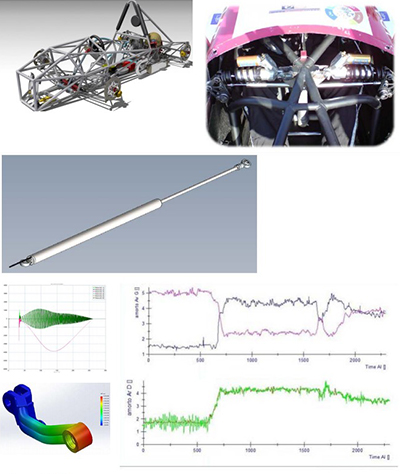
Testing Chassis Structure
APPLICATION: When the mechanical engineers are designing a new chassis or new security device for the automotive market, they base their analysis on existing theoretical schematics and structures behaviors. The customer needs a displacement sensor to look into the structure chassis rigidity and behavior of the part in motion during the test. The LVDT displacement sensors will be used as a primary measurement on shock absorber. They will combine roll holding, absorber rigidity coefficient and movement of the absorber devices on each wheel. An embedded computer will be placed to cover the acquisition and sampling. The electronic must register as much measurements as possible in using high readings rate.
SOLUTION: Analogue S Series with universal joints has been selected to simplify the mounting process. The Robustness of the stainless steel satisfy the specifications of the dampers application. The direct analogue output will be kept by a logger device to insure the quality of the acquisition. |
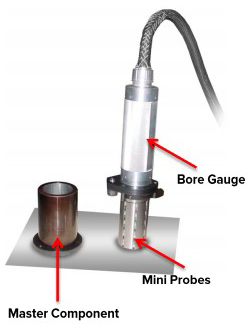
Measuring Interior Geometry of Differential System
APPLICATION: Using 120 probes integrated using the Orbit 3 Network, the interior geometry of the two main cases of a transfer/differential system could be measured at one time in an off-gauge station. The casings of the transducer/differential system need to be as precise as possible to ensure the system functions efficiently once the gear, shafts and seals are assembled within the system. A lack of efficiency can lead to lash, vibration and wear, resulting in poor performance, including power loss, lower fuel efficiency, noise and premature failure. Two parts were required to be measured at one time by one PLC and one software package with as fast a cycle time as possible. Measurements to be taken included flatness, roundness, concentricity and perpendicularity, alongside various other geometric requirements.
SOLUTION: Solartron Metrology Orbit 3 Network was perfectly suited to this application, enabling the use and integration of up to 150 probes, with one gauging software through one interface module to one PC. 120 mini probes were in direct contact with the cases, which allowed the use of just one mean master. |
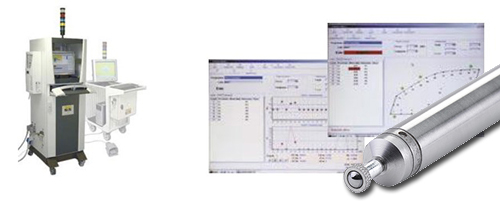
Measuring Glass
APPLICATION: Measuring glass for automotive and industrial applications needs to be precise and delicate, to ensure no marring of the surface.
SOLUTION: The Ultra Feather Touch probe carries a low 0.03N tip force and can be used on delicate materials or surfaces that cannot be marred or scratched. The probe carries an accuracy of 6 microns with outstanding repeatability. The stations, house and protect a PC, printer and other interface components for lab or shop-floor control of metrology stations. Up to 337 Orbit Digital Probes can be used with a single Orbit Manager providing rapid, repeatable and reliable data acquisition. Application-specific featuring implements the range of Orbit Digital Probes to it’s strengths, such as nylon tipped Feather Touch probes for products such as automotive glass. Product specific software is written to customer’s requirements enabling full statistical process control. |
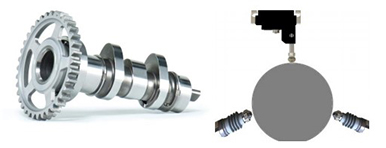
Grading to Match Journal Size with Corresponding Cylinder Head Cradles
APPLICATION: During manufacture, it is required that both the journal and the cradle on the cam shaft are concentric, as there control the valves for inlet and exhausts. In this particular application the cam shafts are graded as per the specified tolerances, similar to bearing grading applications. The grading process is caried out to match journal size with corresponding cylinder head cradles. Manufacturers struggle to find accurate solutions which can take readings of high speeds to ensure of a cost saving.
SOLUTION: With measurement being taken at 3 points per journal and cradle, both gauging probes and flexures were used to achieve optimum results, with the diameter and centre point being calculated from these figures. In total, 12 Solartron sensors were used in the one fixture, communicating with one another using the Orbit 3 Network, a fully formed digital measuement system. To further reduce costs, reading are taken during Dynamic mode at very fast rates of 2000 readings per second, speeding up the manufacturing process (which can be doubled by reducing the probes per fixture to 8). |

Measuring Flatness of Surface
APPLICATION: Manufacturing companies undertaking the measurement of flatness of surface needed to take precise readings for the smallest degree of change, whilst needing to have a concise output for easy readability.
SOLUTION: The Orbit 3 Network is able to take synchronised readings of several digital probes, using the Orbit Dynamic-Mode which runs at high speed. A displacement sensor such as the S-series, can be used alongside an output module, such as a TTL, for synchronization. The displacement sensor measures the path of motor-driver linear guided crossbar. There are several digital probes fixed onto the crossbar on moveable mounting brackets. A flat work-piece, fixed on the table, can be measured with the crossbar. With a simple Excel programme on a PC, the values can be read and stored, which can then be visualized in a virtual 3D model. |

Roll Maintenance/Grinding
APPLICATION: Paper machine maintenance is a large task; part of this task is roll maintenance/grinding. These rolls require a high degree of roundness and surface finish with minimal run-out.
SOLUTION: The Orbit 3 measurement system supplies the roll grinder operator the data needed. It provides the operator with axial and roundness surface information and diagnostics so that machine adjustments can be made in a timely manner. One digital probe records the roll profile shapes and a second Digital Probe is used as a diagnostic tool to measure roll motion. A rotary encoder connected to an Ethernet Interface module provides degree of rotation measurement relative to probe position. This solution is cost effective and less complicated than other multi-probe systems in this industry application. The ability to integrate a rotary encoder with probes provides a complete solution. |
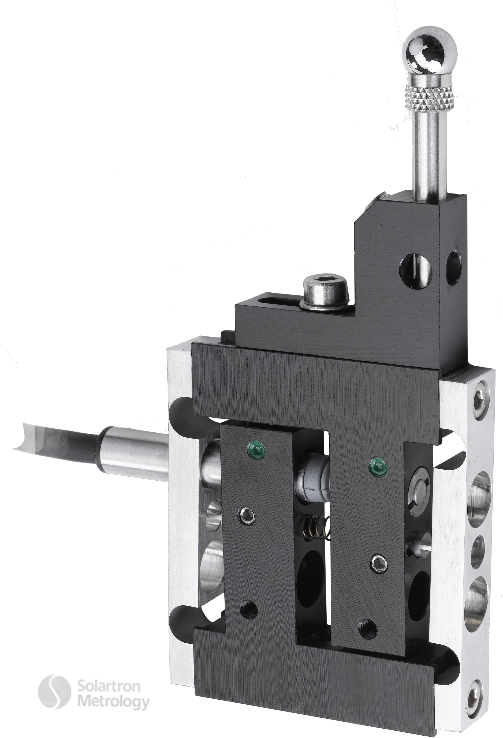
Cam shaft measurement using Flexures
Parallel Flexures with high resolution and excellent repeatability make Solartron’s Flexure Transducers the first choice for high-speed precision gauging. With no sliding moving parts, the flexure will maintain performance for millions of cycles and are virtually free from hysteresis. Flexures can be mounted such that there is little or no stress through the gauge line enabling precision profiling of moving materials such as rotating shafts, brake discs etc.
SOLUTION: Solartron’s Digital Flexures are ideal for very high volume and high precision applications such as component gauging. |
